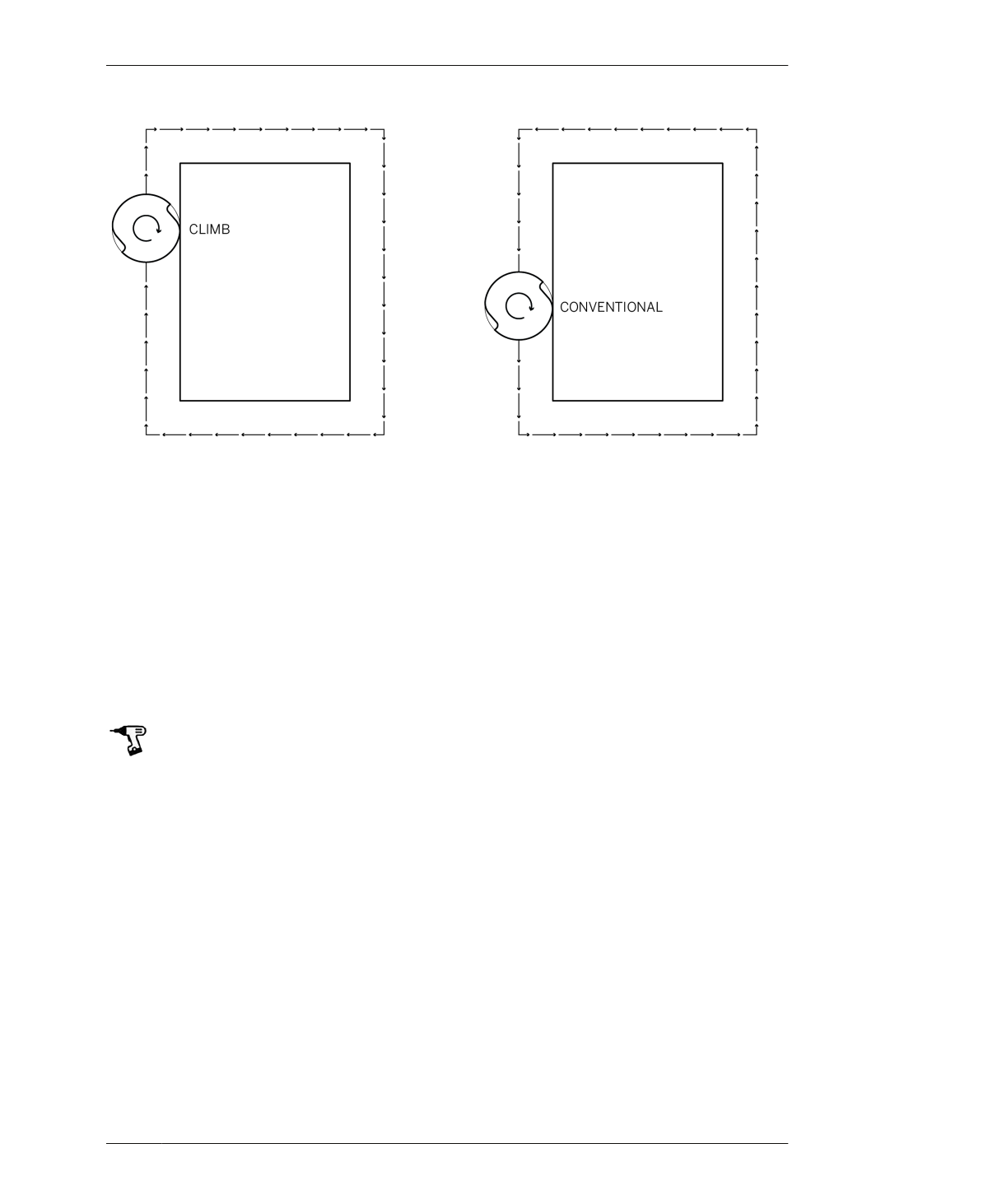
RAMP MOVES AND TABS
FIGURE 6-8
Climb versus conven-
tional
CLIMB CUTTING
In a climb cut, the chip starts thick and ends
thin. This can result in a smoother cut in mate-
rials such as hardwood because it eliminates
end-grain splintering. However, the forces cre-
ated can also mar the finsh and push parts
around due to the bit trying to “climb” out of
the cut. In addition, the forces created can
deflect the tool.
Conventional (counterclockwise) and climb
(clockwise) feed directions are reversed when
pocketing or cutting the interior of a part.
When making interior cuts, a conventional
feed direction will move clockwise, and a
climb cut will move counterclockwise.
FEED DIRECTION STRATEGIES
Although we’re recommending a conventional
cut for plywood, this isn’t gospel. Machining
advice is always specific to the exact materials
and tooling you’re using. Plywood varies greatly
between brands, types, and even between
batches. Sometimes climb cutting may work
better than conventional.
The key is to jump in and test your material/
tool pairing and settings. Always cut in the
direction that gives you the best finish. Cut
some test pieces and look at both the part and
the scrap/waste material. If the scrap looks
better than your cut parts, reverse the feed
direction.
You can also try using an onion-skin strategy.
This is a machining methodology that utilizes
the strengths of both climb and conventional
cutting. First, climb-cut the part, but leave a
thin “onion skin” layer behind. Then cut the
final pass as a conventional cut. 1
RAMP MOVES AND TABS
Although center-cutting end mills can plunge
straight into the workpiece when beginning a
toolpath, it’s hard on the cutter and leads to
premature wear—while it is possible to drive
them axially into your workpiece that doesn’t
mean you should.
Ramp moves are a much gentler way to ease
the tool into the material. Ramping in at a grad-
ual angle reduces heat buildup and spindle/z-
1. Router Bit Basics for
CNC by Steve Glassel
describes the process in
detail, see Appendix A.
06/MACHINING FOR DESIGNERS
155
